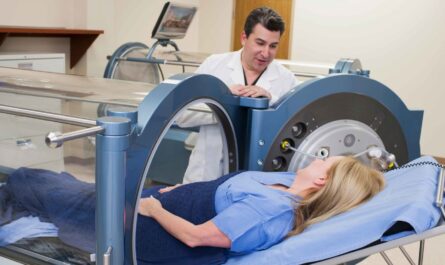Over the past few decades, endoprosthesis or joint replacements have revolutionized the treatment of severe joint diseases and injuries. Once considered a last resort, joint replacement surgery is now a commonly performed procedure that helps millions regain mobility and reduce pain each year
History of Endoprosthesis
The first successful total hip replacement was performed in the early 1960s by British surgeon Sir John Charnley. He used acrylic bone cement to fasten metal alloy femoral and acetabular socket components to patients’ remaining bone. This cemented endoprosthesis design proved highly successful and durable. In the 1970s, total knee replacements also gained popularity. However, early joint replacements were limited by available materials and imperfect design. Joint replacements in the 1970s and 80s were projected to last 10-15 years on average.
Advances in Materials and Design
Modern joint replacements last much longer due to advances in biomaterials and surgical techniques. For the first time in the 1980s, surgeons were able to perform uncemented total hip replacements that relied more on bony ingrowth and fixation rather than cement. This reduced implant loosening over time. In the 1990s, highly cross-linked polyethylene improved wear resistance of polyethylene acetabular liners in hip replacements. Newer alloys like cobalt-chrome and oxidized zirconium femoral heads further reduced wear. Titanium and its alloys are now standard materials for most implants. Ceramics offer increased strength and reduced wear but are more brittle. Today’s endoprostheses can last 20-30 years on average.
Common Types of Joint Replacements
By far the most common types of joint replacements are:
– Total Hip Replacements: Over 300,000 performed annually in the US to replace arthritic or damaged hip joints. The natural femoral head is replaced with a metal ball attached to a stem inserted into the femur. The acetabulum is replaced with a socket lined with polyethylene.
– Total Knee Replacements: Over 600,000 knee replacements done each year for arthritis. The femoral condyles and tibial plateaus are resurfaced with metal components while the patella is often replaced or resurfaced.
– Shoulder Replacements: Around 100,000 shoulder replacements annually treat arthritis, fractures, or rotator cuff tears. Both the humeral head and glenoid are replaced.
– Ankle Replacements: Still rare but growing in use to treat arthritis in 30,000+ Americans per year. Both the tibia and talus are replaced.
Risks and Benefits
While endoprostheses improve function and reduce pain, there are risks. Like any surgery, infections, blood clots, anesthesia complications and implant failure or loosening are possible, albeit rare. Over time, polyethylene in older hip implants may not hold up to use. Regular monitoring for asymptomatic patients is key to catch issues early if they arise. However, modern implants have low failure rates of less than 5% at 10 years. For those suffering with joint damage, implants now provide 15-20 more years of mobility.
Outcomes and the Future of Joint Replacements
With increased longevity of implants, total joint replacements have become increasingly successful procedures. Studies show hip and knee replacements improve pain and function up to 5 years post-op. While no implant will last a lifetime, modern devices have greatly enhanced quality of life for millions suffering from arthritis and injuries. Newer biomaterials, 3D printing, and robotics will surely advance implant design even more in the future. As life expectancies rise, joint replacements will remain a mainstay of orthopedic care worldwide for decades to come. Today’s advanced endoprostheses help patients stay active well into advanced age.
joint replacements known as endoprostheses have revolutionized orthopedic care over the past 60 years. Advances in materials, design and surgical techniques now allow most implants to function successfully for 15-20 years on average. Although not risk-free, modern joint replacements remain highly effective procedures that restore mobility for millions each year. Continued innovations ensure endoprostheses will maintain their vital role in orthopedics. With improved designs, more natural joint movements and feeling may become possible in the future through advanced implant technologies.
*Note:
1. Source: Coherent Market Insights, Public sources, Desk research
2. We have leveraged AI tools to mine information and compile it




